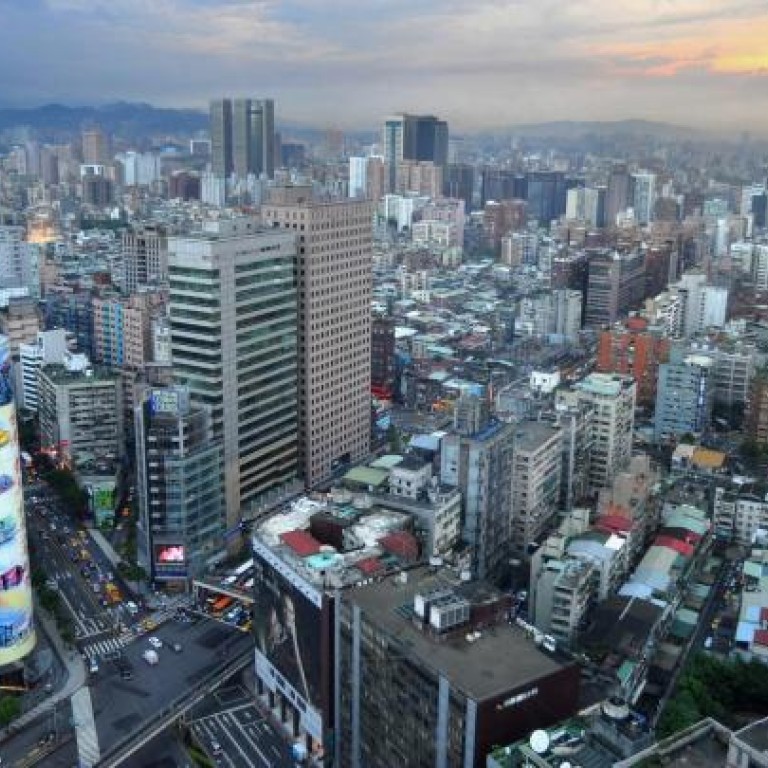
Taiwan insurers go global in search of returns
Law change paves the way for the cashed-up sector to spread its wings from Taipei, but controls mean there won't be a flood of money
Passing through Taipei's major business districts, it is common to see office buildings adorned with names of insurance companies. Indeed, about half of the grade-A office buildings in the city are owned by domestic insurers, with these companies accounting for about 40 per cent of turnover in the past few years.
But this situation is set to change. This month's announcement by the Taiwanese Insurance Bureau permitting overseas real estate investments for the first time has opened up the possibility of forays into the global investment market as the insurers look to diversify from the overcrowded domestic market.
So, can we expect capital flow into Hong Kong and other major world cities?
The Taiwan commercial market could certainly be described as "steady" and far removed from the more volatile nature of certain other Asian markets.
Of course you might think for an industry such as insurance that 'steady is good'. Taiwanese insurance companies have long been active in buying commercial properties on the island with their allocation to real estate hovering about 4 per cent of total invested capital since 2006.
However, in response to strong growth of insurance premiums at 7.6 per cent a year over the same period, there is continuous pressure for the insurers to increase investment in real estate to maintain an overall balance of their portfolios.
In fact Taiwan insurers' real estate investment assets have grown at 13 per cent a year in the past six years to a total of US$19.8 billion, and since 2006, US$9 billion of real estate acquisitions were made.
However, restrictions of investing overseas, meant all purchases were made onshore.
Given the finite supply, the strong appetite for core assets in Taipei among insurers has inevitably driven prime office yields downwards from about 3.5 per cent in 2009 to just 2.2 per cent last year, a level that may be the lowest in the world.
For investors the situation is exacerbated on the occupier side. Taiwan's office demand has remained steady but there has been minimal growth in rents in the past few years and these are not expected to see a significant boost in the near term.
This low return has triggered concern with the regulator who subsequently increased the minimum annualised yield on commercial property acquisitions by insurance companies from 1.875 per cent in February 2011 to 2.125 per cent in August last year, then to 2.875 per cent in November with the additional requirement that properties cannot be resold within five years of purchase.
This has quietened demand in Taiwan, and this is likely to remain inactive as assets could pass the new yield hurdle.
With suitable options in Taiwan limited, offshore investments became a possibility on April 11, with draft rules to become effective in months.
The rules have been an open secret for some time and insurers in Taipei are checking options for international real estate investment, with a series of workshops held with the CBRE Asia Capital Markets' teams proving popular.
Despite the interest, this won't translate into an immediate flood of capital from Taiwan.
While insurers have fairly large pools of capital, the new rules are, in fact, quite restrictively constructed.
Only insurance companies with risk-based capital ratio at or above 200 per cent are allowed to invest in overseas property and the amount they can spend abroad should not exceed 10 per cent of their owners' equity.
This would mean that about US$2.6 billion of capital, or less than 0.6 per cent of their investable funds, can be deployed overseas initially under the new regulations.
Also, insurers are likely to be required to invest in wholly owned buildings rather than co-investing with more experienced partners.
Under the guidelines, the target investment building has to be income-generating with occupancy over 60 per cent and has to be held in 100 per cent equity. This further reduces the lot size of assets available and only a handful of insurers will have the financial capacity at this time to fulfil the requirements.
So where will the money go?
While the new rules have not imposed geographical restrictions, the markets of Shanghai, Ho Chi Minh City, London, Frankfurt, New York, and Toronto, are known as being a high priority for those seeking initial overseas investment.
Insurers are particularly interested in Shanghai for geographical proximity and London for market maturity and availability of assets.
However, both markets are very high up the priority lists of plenty of other investors as well, so Taiwanese insurers will face keen competition.
While, of course, not ruling out Hong Kong, limited available supply and strong local competition make this market difficult to enter.
To add another layer of difficulty in competing for quality assets, all overseas investments have to obtain approval from the insurance bureau on a case-by-case basis.
In the case of investment in the mainland, application also has to be made to Taiwan's Ministry of Economic Affairs to set up a wholly owned foreign enterprise for on-shore assets.
In all, it could be a slow start for Taiwanese insurers to expand into overseas markets given the relatively conservative requirements in the new overseas investment rules.
Shanghai and London will probably be the markets to 'test the water'.
However, this is a highly positive development that signals the opening of foreign investment opportunities for a group of Taiwanese investors controlling more than US$450 billion of capital and there is, of course, scope for further relaxation of the restrictions to allow more outbound investment.
After all, trapping the insurance funds at home for yields at low 2 per cent levels is not a solution over a longer term.
